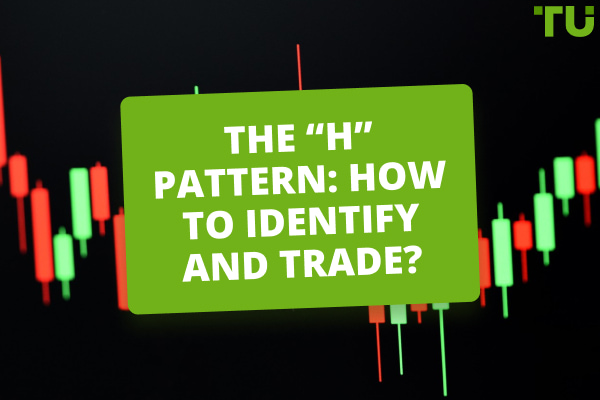Basic Elements Of A Trading System
4 Basic Elements of a trading system:
-
1
Goals and objectives.
-
2
-
3
-
4
A trading system is a set of rules and algorithms that a trader uses to make trading decisions. It can be based on fundamental analysis, technical analysis, or a combination of both.
A trading system is a set of rules and algorithms that a trader uses to make trading decisions.
Components of a trading system
The key components of a trading system can be divided into the following categories:
-
Goals and objectives
-
Trading strategy
-
Trading plan
-
Trading psychology
Goals and objectives
The first step in creating a trading system is to define its goals and objectives. What do you want to achieve with your system? Do you want to generate a steady income, grow your capital quickly, or simply enjoy trading?
The goals and objectives of your system will determine the choice of trading strategy and trading platform.
The goals and objectives of a trading system should be specific, measurable, achievable, relevant, and time-bound.
For example, here is one possible goal for a trading system:
Generate a steady income of 10% per year.
This goal is specific because it is measured in percentage terms per year. It is also achievable because it does not require too much capital or time to achieve. It is relevant because it is related to long-term investing. And it is time-bound because it requires the goal to be achieved within one year.
Trading strategy
The trading strategy is the core of the trading system. It defines which assets you will trade, when you will enter the market and exit it, and how you will manage your risk. There are many different trading strategies, based on fundamental analysis, technical analysis, or a combination of both.
The trading strategy should be based on a reliable source of information. If you are using fundamental analysis, you need to make sure that you have access to reliable data on fundamental factors such as company financials, macroeconomic data, and news. If you are using technical analysis, you need to choose the appropriate technical indicators and learn how to interpret them correctly.
There are many different types of trading strategies, which can be divided into two main categories:
-
Fundamental analysis
-
Technical analysis
Fundamental analysis is based on the study of economic factors that can affect the price of an asset. These factors include company financials, macroeconomic indicators, and news.
Technical analysis is based on the study of historical price and trading volume data. A trader uses technical indicators to identify patterns in this data and make trading decisions.
More specific types of strategies can be divided into the following categories:
-
Long-term strategies are focused on long-term price growth. They are typically used for investing in stocks, bonds, or other securities.
-
Medium-term strategies are focused on shorter-term price growth. They are typically used for trading stocks, currencies, or other financial instruments.
-
Short-term strategies are focused on quick price growth. They are typically used for trading stocks, currencies, or other financial instruments.
In addition, strategies can be divided by the following:
-
By asset type: Strategies can be focused on trading stocks, currencies, commodities, indices, or other assets.
-
By trading style Strategies can be focused on aggressive growth, moderate growth, or conservative growth.
-
By risk level: Strategies can be focused on low risk, medium risk, or high risk.
Trading plan
A trading plan is a document that describes your trading strategy in detail. It should be clear, concise, and comprehensive.
A trading plan should include the following sections:
-
Goals and objectives
-
Trading instruments
-
Trading rules
-
Trading signals
-
The trading plan should be specific and comprehensive. It should include all the necessary details so that you can make informed trading decisions.
Here is an example of a "Trading signals" section in a trading plan:
-
Entry into the market
-
Buy if the price of an asset exceeds the resistance level.
-
Sell if the price of an asset is below the support level.
-
-
Exit from the market
-
Close the position when the price of an asset reaches the target price.
-
Close the position when the price of an asset reaches the stop loss.
-
Trading psychology
Trading psychology is just as important as trading strategy. A successful trader must be able to control their emotions and make sound decisions even in stressful situations. There are many different psychological techniques that can help traders improve their results.
Trading psychology is a complex topic that is the subject of many books and articles. Here are a few tips that can help you improve your psychological skills:
-
Develop discipline. Discipline is the key to success in trading. You need to be able to follow your trading plan even in difficult situations.
-
Manage your emotions. Emotions can be your enemy in trading. Learn to control your emotions and make sound decisions even when you are under stress or disappointment.
-
Don't be afraid to make mistakes. Every trader makes mistakes. It is important to learn from your mistakes and move on.
How to Evaluate the Performance of a Trading System
To evaluate the performance of a trading system, you can use the following metrics:
-
Average profit: This is the average amount of profit per trade.
-
Average loss: This is the average amount of loss per trade.
-
Stop-loss size: This is the amount of loss that a trader is willing to accept.
-
Take-profit size: This is the amount of profit that a trader wants to achieve.
-
Profit factor: This is the ratio of average profit to average loss.
-
Return on investment (ROI): This is the ratio of total profit to total investment.
-
Average holding period: This is the average amount of time that a trader holds a position.
-
Success rate: This is the percentage of trades that closed with profit.
These metrics can be calculated for a single trading system or for multiple systems. To do this, you need to backtest the system on historical price data.
When backtesting a trading system, it is important to consider the following factors:
-
Backtest period: The longer the backtest period, the more reliable the results will be.
-
Currency pair or market: Backtest results may vary depending on the currency pair or market.
-
Position size: Backtest results may vary depending on the position size.
If the backtest results show that the trading system is effective, then it can be used in real trading. However, it is important to understand that backtest results do not guarantee success in real trading.
Here are a few tips for evaluating the performance of a trading system:
-
Use multiple metrics: It is not advisable to rely on a single metric, as it may be unreliable.
-
Backtest the system on historical data from different periods: This will help you understand how the system will work in different market conditions.
-
Backtest the system on multiple currency pairs or markets: This will help you understand how the system will work in different conditions.
-
Backtest the system with different position sizes: This will help you understand how the system will work with different risks.
When evaluating the performance of a trading system, it is important to be objective and consider all factors that may affect the results.
Conclusion
A trading system is an important tool for any trader. It can help you achieve your goals, reduce your risks, and improve your profitability. It is important to carefully consider all the components of a trading system before you start using it.
Best Forex brokers


FAQs
What are the elements of trading?
-
Assets: The things that are traded, such as stocks, currencies, commodities, or indices.
-
Prices: The value of the assets being traded.
-
Volume: The amount of assets being traded.
-
Time: The period of time over which trading takes place.
-
Risk: The potential for loss that is involved in trading.
What are the 5 components of the trading system?
-
Goals and objectives: What the trader wants to achieve with the system.
-
Trading strategy: The rules and methods that the trader uses to make trading decisions.
-
Trading plan: A document that describes the trading strategy in detail.
-
Trading psychology: The mental and emotional skills that the trader needs to be successful.
-
Risk management: The strategies that the trader uses to control risk.
What should a trading system include?What should a trading system include?
-
A clear and concise set of rules and guidelines.
-
A way to identify trading opportunities.
-
A way to manage risk.
-
A way to track performance.
What is the basic structure of trading?
-
Identify an opportunity.
-
Enter the market.
-
Manage the trade.
-
Exit the market.
Glossary for novice traders
-
1
Broker
A broker is a legal entity or individual that performs as an intermediary when making trades in the financial markets. Private investors cannot trade without a broker, since only brokers can execute trades on the exchanges.
-
2
Trading
Trading involves the act of buying and selling financial assets like stocks, currencies, or commodities with the intention of profiting from market price fluctuations. Traders employ various strategies, analysis techniques, and risk management practices to make informed decisions and optimize their chances of success in the financial markets.
-
3
Trading system
A trading system is a set of rules and algorithms that a trader uses to make trading decisions. It can be based on fundamental analysis, technical analysis, or a combination of both.
-
4
Fundamental Analysis
Fundamental analysis is a method or tool that investors use that seeks to determine the intrinsic value of a security by examining economic and financial factors. It considers macroeconomic factors such as the state of the economy and industry conditions.
-
5
Forex Trading
Forex trading, short for foreign exchange trading, is the practice of buying and selling currencies in the global foreign exchange market with the aim of profiting from fluctuations in exchange rates. Traders speculate on whether one currency will rise or fall in value relative to another currency and make trading decisions accordingly.
Team that worked on the article
Oleg Tkachenko is an economic analyst and risk manager having more than 14 years of experience in working with systemically important banks, investment companies, and analytical platforms. He has been a Traders Union analyst since 2018. His primary specialties are analysis and prediction of price tendencies in the Forex, stock, commodity, and cryptocurrency markets, as well as the development of trading strategies and individual risk management systems. He also analyzes nonstandard investing markets and studies trading psychology.
Dr. BJ Johnson is a PhD in English Language and an editor with over 15 years of experience. He earned his degree in English Language in the U.S and the UK. In 2020, Dr. Johnson joined the Traders Union team. Since then, he has created over 100 exclusive articles and edited over 300 articles of other authors.
Mirjan Hipolito is a journalist and news editor at Traders Union. She is an expert crypto writer with five years of experience in the financial markets. Her specialties are daily market news, price predictions, and Initial Coin Offerings (ICO).









